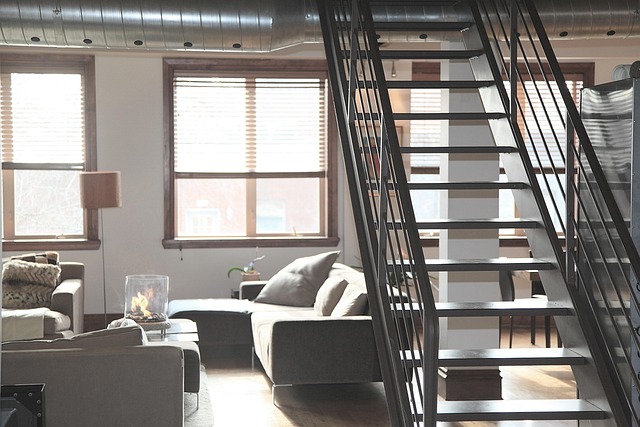No-Drill Blinds: Solutions for Renters and DIY Enthusiasts
Installing blinds without damaging walls is becoming increasingly popular among renters and homeowners. This practical solution allows for light control and privacy without leaving marks on window frames or walls. In this article, we'll explore various no-drill blind options, their benefits, and installation features for those seeking effective and convenient window covering solutions.

Blinds have become an integral part of modern interior design, providing not only protection from the sun but also creating a cosy atmosphere in any room. However, installing traditional blinds often requires drilling holes in walls or window frames, which isn’t always possible, especially for renters or in historic buildings. Fortunately, today’s market offers various blind options that can be installed without drilling, while maintaining functionality and aesthetic appeal.
What Types of No-Drill Blinds Are Available?
No-drill blinds come in various styles and designs suitable for different window types and interiors. The main types include:
-
Suction Cup Blinds – attached directly to glass using vacuum suction cups. They’re ideal for small windows and glass doors. The advantage of this option is the ease of installation and removal.
-
Clip-on Blinds – mounted on the window frame using special clips. This option is suitable for most PVC windows and provides secure fixation without damaging the surface.
-
Self-adhesive Blinds – attached using a special adhesive base that leaves no marks after removal. These blinds are often used for temporary shading or in rented premises.
-
Roller Blinds with Telescopic Mechanism – installed between window frames without additional fastening, using the tension rod principle.
Why Do Renters and DIY Enthusiasts Choose No-Drill Blinds?
The popularity of no-drill blinds among renters and DIY enthusiasts is due to several important factors:
Preserving Rental Deposits – installing blinds without damaging walls and window frames helps avoid problems when returning rented accommodation and ensures the return of security deposits.
Versatility and Mobility – no-drill blinds are easy to dismantle and transfer to a new location, which is especially important for people who frequently change their place of residence.
Ease of Installation – most no-drill blind options can be installed independently in a few minutes without special tools or skills.
No Damage – particularly important for historic buildings where drilling could damage valuable architectural elements, or for modern PVC windows where damage might compromise weatherproofing.
Cost-effectiveness – eliminating the need to hire specialists for installation saves money.
Comparison of No-Drill Blind Options
Choosing the optimal no-drill blind option depends on the type of windows, budget, and personal preferences. Let’s look at the characteristics of different types in more detail:
Suction Cup Blinds * Advantages: extremely simple installation, quick removal capability, low cost * Disadvantages: limited load capacity, may fall off with significant temperature changes
Clip-on Blinds * Advantages: secure fixation, suitable for most PVC windows, can support greater weight * Disadvantages: not suitable for all types of window frames, may be more expensive than other options
Self-adhesive Blinds * Advantages: universal application, varied design, easy installation * Disadvantages: adhesive base may lose its properties over time, more difficult to remove without leaving marks
Roller Blinds with Telescopic Mechanism * Advantages: elegant appearance, ease of use, suitable for windows of various sizes * Disadvantages: higher cost, limitations on window width
Features of No-Drill Blind Installation
Installing no-drill blinds usually doesn’t require special skills, but it’s worth following certain recommendations:
-
Carefully Measure the Window – before purchasing blinds, you need to accurately measure the window dimensions, considering the design features of the chosen blind type.
-
Prepare the Surface – to ensure reliable fastening, the surface of the glass or window frame should be clean and dry. Use alcohol solutions to remove grease and dirt.
-
Follow Manufacturer’s Instructions – different blind models may have their own installation features, so it’s important to carefully read the instructions.
-
Check the Reliability of Fastening – after installation, check if the blinds are securely held, especially if you’re using suction cups or adhesive bases.
-
Pay Attention to the Weight of the Structure – for heavy blinds, choose more reliable fastening methods, such as clips rather than suction cups.
Prices and Comparison of Popular No-Drill Blind Models
The market offers many no-drill blind options in different price categories. Below is a comparative table of popular models with their characteristics and approximate prices:
| Model | Fastening Type | Material | Size Range | Approximate Cost |
|---|---|---|---|---|
| Blindecor Noche y Día | Clips | Polyester | 60-180 cm | £35-£75 |
| IKEA SCHOTTIS | Self-adhesive | Polyester | 90x190 cm | £15-£25 |
| Gardinia EasyFix | Telescopic | Aluminium/fabric | 45-125 cm | £40-£100 |
| Velcro VR3 | Velcro strips | Bamboo | 60-180 cm | £50-£120 |
| Liedeco Klemmfix | Clips | PVC | 40-160 cm | £35-£90 |
Prices, rates, or cost estimates mentioned in this article are based on the latest available information but may change over time. Independent research is advised before making financial decisions.
Care and Maintenance of No-Drill Blinds
Proper care of no-drill blinds will help extend their service life and maintain their attractive appearance:
Regular Cleaning – remove dust with a soft brush or vacuum cleaner with a furniture attachment. For fabric blinds, you can use a damp cloth.
Checking Fasteners – periodically check the reliability of fasteners, especially for blinds with suction cups or adhesive bases.
Careful Use – avoid sudden movements when raising and lowering blinds to prevent damage to the mechanism or fastening.
Protection from Moisture – for wooden or bamboo blinds, it’s important to prevent contact with water to avoid deformation.
No-drill blinds are a practical and aesthetic solution for those who don’t want to or cannot damage walls and window frames. The wide range of models allows you to choose an option that will perfectly fit into any interior and meet individual needs. Due to their ease of installation, mobility, and affordable price, such blinds are becoming increasingly popular among renters and DIY enthusiasts who value the practicality and aesthetics of their living space.



